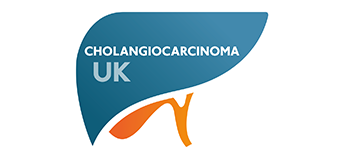AMMF and the Rare Cancer Report
By Helen Morement
A year ago, I was invited to be part of the advisory board for a new collaborative project being undertaken by Public Health England’s National Cancer Intelligence Network (NCIN1) and Cancer522. This aim of this project was to produce, for the first time, a list of as many of the rare and less common cancers as possible together with their correct ICD-10 codings3 and their incidence and mortality figures.
Robust data drives policy, and so this work was seen as hugely important amongst the rare cancer organisations making up the Cancer52 membership – for many of whom, this would be the first time they would have access to such data.
The cholangiocarcinoma mission …
Whilst this work would involve listing almost 280 cancers, it quickly became apparent that cholangiocarcinoma, because of the terminology used (it is variously listed as bile duct cancer, biliary tract cancer, as well as cholangiocarcinoma – both intrahepatic and extrahepatic) and its equally confusing ICD-10 codes, was in danger of being omitted from this report at worst, or incorrectly reported at best.
So that’s when the mission to get cholangiocarcinoma correctly listed began.
Firstly, agreement as to which of the ICD-10 codes related to cholangiocarcinoma was needed. I sought help and advice from several consultants and pathologists, and finally four codes – C22.1, C24.0, C24.8 and C24.9 – were agreed on. So far so good. But, to get agreement that data from these codes should be grouped together to provide one set of figures for cholangiocarcinoma needed recognition and approval from NCIN’s Upper GI Site Specific Cancer Recognition Group (SSCRG4).
This was far from easy to achieve and involved much lobbying and attending meetings. Having determination and a thick skin was a definite advantage during these days as, on more than one occasion I was told (by those that should have known far better) that the incidence of this disease was so low it wasn’t worth separating out from ‘liver cancer’! Red rag and bull springs to mind!!
However, eventually terminology and coding was agreed, cholangiocarcinoma was on the NCIN’s radar, and would receive recognition within the report.
The report is published …
The enormous initial task of listing as many of the rare and less common cancers as possible and checking their codings has now been done by the analysts at NCIN, with those of us on the advisory board being consulted each step of the way, and the first stage of the NCIN/Cancer52 ‘Rare and Less Common Cancers’ report covering data from England for 278 cancers, some for the first time ever, is now complete. I was delighted to be at NCIN’s conference in Belfast (8-10 June) for its publication.
For the full NCIN/Cancer52 report on the Rare and Less Common Cancers, click here.
To underline the importance of this report and the facts it highlights, it was rapidly picked up by the mainstream press and articles have to date appeared in The Times and The Guardian.
To see the article in The Times, click here
To see the article in The Guardian, click here
To see Cancer52’s press release, click here
Back to cholangiocarcinoma …
The statistics for cholangiocarcinoma have been grouped under the ICD-10 codings that were finally agreed by NCIN’s Upper GI SSCRG – ie, C22.1, C24.0, C24.8 and C24.9, and the following are the incidence and mortality figures shown in the report covering four years, 2010-13, for England only – the information for the rest of the UK will follow in the next stage of the report:
Cholangiocarcinoma (England only):
Incidence Mortality
2010 1,832 1,720
2011 1,864 1,844
2012 1,945 2,018
2013 1,965 2,161
4 yr total: 7,606 7,743
Cholangiocarcinoma’s dire mortality rate gets a mention in the Executive Summary to the report, “A number of cancer sites stand out as having comparatively high mortality rate considering their incidence rates. … Biliary tract cancers (cholangiocarcinoma/bile duct cancer (intra- or extrahepatic)) also have a higher mortality rate, 3.58 vs 3.64 per 100,000 population.”
And, interestingly, the totals for hepatocellular carcinoma (HCC – the other primary liver cancer) for the four years are: Incidence 9,902, Mortality 6,899. So, we are losing more people to cholangiocarcinoma than to HCC.
It’s worth noting the gallbladder figures too. Although gallbladder cancer falls under the code ICD-10 23, gallbladder cancer patients are often included in BTC trials. These are the gallbladder incidence and mortality figures as included in the report:
Gallbladder cancer (England only):
Incidence Mortality
2010 623 408
2011 644 432
2012 696 420
2013 751 438
4 yr total: 2,714 1,698
In conclusion …
Robust data drives policy and the data shown within this report should enable policy makers to improve strategies and decision-making on awareness, prevention, diagnosis, treatment and clinical outcomes for those affected by the rare and less common cancers.
I sincerely hope the figures for cholangiocarcinoma, far more accurate than ever before, and which show increasing incidence and the appalling mortality rate, will prove a useful tool for the future in achieving better recognition of the disease and, together with Cancer52, AMMF calls on policy makers to more strongly address the inequalities and inequities faced by not only cholangiocarcinoma patients, but so many of the rare and less common cancer patients throughout the UK.
Helen Morement
Comment on the report from Dr Mick Peake, lead clinician at the NCIN: “We are delighted to be part of this analysis which supports the smaller groups within the cancer community, many of which are so often overlooked. These numbers, available for the first time across England, will make an enormous difference to the development of high quality care for the patients who suffer from these cancers. We will be working with Cancer52 to ensure that their members can utilise the data to its best effect.”
To see the NCIN/Cancer52 report on the Rare and Less Common Cancers in full, including the cholangiocarcinoma statistics, click here
1 NCIN (The National Cancer Intelligence Network) – The NCIN is a UK-wide initiative, working to drive improvements in standards of cancer care and clinical outcomes by improving and using the information collected about cancer patients for analysis, publication and research. http://www.ncin.org.uk/home
2 Cancer52 – an alliance of some 80 of the rare and less common cancer organisations working to address inequality and improve outcomes for patients with these highly challenging diseases. AMMF is an active member of Cancer52, and Helen Morement is a board director. http://www.cancer52.org.uk/
3ICD-10 – The International Classification of Disease tenth revision is a system of coding created by the World Health Organization that notes various medical records including diseases, symptoms, abnormal findings and external causes of injury.
For cholangiocarcinoma codings, see: http://apps.who.int/classifications/icd10/browse/2015/en#/C22.1
4 SSCRGs (Site Specific Clinical Reference Groups) – To ensure that the data now available is used to improve clinical care, as well as to advise on what data needs to be collected and what analyses conducted, the NCIN has established twelve SSCRGs.
For more information on SSCRGs, go to: http://www.ncin.org.uk/cancer_type_and_topic_specific_work/cancer_type_specific_work/sscrgs
June 2015







